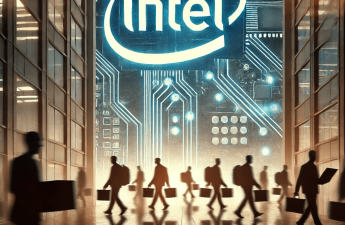Nvidia, a company that began in the 1990s as a niche supplier of graphics processing units (GPUs) for the gaming industry, has risen to become one of the most valuable technology companies in the world.
Its meteoric rise, culminating in a market valuation exceeding a trillion dollars, is the result of strategic innovation, foresight into emerging markets, and an ability to adapt to rapidly evolving technological landscapes.
Here’s how Nvidia transformed from a gaming-focused business to a dominant player in artificial intelligence (AI), data centers, and autonomous technology.
1. Early Foundations and Innovation in Graphics Processing
Founded in 1993 by Jensen Huang, Chris Malachowsky, and Curtis Priem, Nvidia started with a vision to revolutionize the graphics processing industry. In an era where video gaming was gaining momentum, Nvidia’s focus on developing high-performance GPUs made it a key player in the emerging market of 3D graphics.
Nvidia’s first major product, the GeForce 256, released in 1999, was widely considered the first modern GPU, offering real-time lighting and transforming the visual quality of games.
This innovation set the stage for Nvidia to become the dominant force in the gaming GPU industry. The company adopted an aggressive R&D strategy, continuously pushing the envelope in terms of performance, architecture, and efficiency.
This constant innovation helped Nvidia secure partnerships with major gaming companies and hardware manufacturers.
2. The GPU as a Computational Powerhouse
Nvidia’s most crucial strategic insight came in recognizing that GPUs could be used for much more than just rendering graphics. Unlike traditional central processing units (CPUs), GPUs are designed for parallel processing, which allows them to handle thousands of tasks simultaneously.
This architecture, while originally intended for gaming, turned out to be a perfect fit for the emerging field of high-performance computing and data analytics.
Nvidia introduced the CUDA (Compute Unified Device Architecture) platform in 2006, which enabled developers to harness the GPU’s computational power for tasks beyond gaming.
CUDA was a groundbreaking shift, allowing scientists, researchers, and engineers to apply the parallel processing capabilities of GPUs to a wide range of complex problems, from weather simulations to medical imaging.
This pivot allowed Nvidia to diversify its business. Suddenly, its products were not only essential for gaming but also became integral to industries like scientific research, finance, and manufacturing.
This strategic expansion into non-gaming markets was the first step in Nvidia’s ascent to becoming a global tech leader.
3. The AI and Machine Learning Boom
The next inflection point in Nvidia’s growth was its early recognition of the potential of artificial intelligence. AI requires massive computational power, particularly in training deep learning models, which involve feeding large datasets into neural networks to allow machines to “learn” patterns. GPUs, with their parallel processing capabilities, were ideally suited for this task, and Nvidia seized the opportunity.
In 2012, AI research began gaining mainstream traction, particularly in areas like natural language processing, image recognition, and autonomous driving.
The tech world needed a hardware platform that could efficiently train these increasingly complex AI models, and Nvidia’s GPUs were perfectly suited for the task. Companies like Google, Facebook, and Amazon quickly became Nvidia’s clients, using their GPUs to power data centers and advance their AI research.
To further capitalize on the AI wave, Nvidia developed specialized hardware like the Tesla series of GPUs for data centers, and the Jetson line for embedded AI systems.
By 2016, Nvidia’s stock price began its exponential rise as investors recognized the company’s pivotal role in AI development. Nvidia effectively became the backbone of the AI revolution, with its GPUs becoming synonymous with deep learning and AI training.
4. Expansion into Data Centers and Cloud Computing
Recognizing the growing demand for cloud-based services and data-driven decision-making, Nvidia strategically expanded into the data center market. Nvidia’s acquisition of Mellanox Technologies in 2020 for nearly $7 billion was a key move that bolstered its presence in data centers.
Mellanox, a supplier of high-performance networking hardware, complemented Nvidia’s GPU dominance, enabling the company to offer end-to-end solutions for data centers.
Data centers are now one of Nvidia’s largest and fastest-growing business segments. Companies running AI workloads and large-scale computing tasks rely on Nvidia GPUs for both training AI models and inference—the process of applying trained models to new data.
Nvidia’s technology underpins data centers for tech giants like Amazon Web Services (AWS), Microsoft Azure, and Google Cloud, securing Nvidia’s position at the heart of the cloud computing revolution.
The company’s shift from a gaming hardware supplier to a key provider of data center solutions has also made it critical to the infrastructure that powers the internet, social media, e-commerce, and more.
Nvidia GPUs are now used in thousands of data centers globally, driving its revenue from this sector to billions annually.
5. Dominance in Autonomous Vehicles
Another area where Nvidia has made a significant push is in autonomous vehicles (AVs). The company recognized early on that the complex computing required to enable self-driving cars—particularly for real-time image processing and decision-making—was an ideal application for GPUs.
Nvidia launched its DRIVE platform, which integrates hardware, software, and AI to enable autonomous vehicles.
Nvidia’s DRIVE platform has been adopted by major automakers like Tesla, Mercedes-Benz, and Volvo, as well as startups and autonomous vehicle companies.
By focusing not only on hardware but also on the software and AI ecosystems that support AV development, Nvidia positioned itself as a leader in the autonomous driving space. The company’s technology is now powering everything from advanced driver-assistance systems (ADAS) to fully autonomous vehicle prototypes.
6. The Metaverse and Beyond
With the rise of the metaverse—a collective virtual shared space that combines augmented reality (AR), virtual reality (VR), and the internet—Nvidia is positioning itself as a key enabler of this next evolution of the internet.
The company’s Omniverse platform, introduced in 2021, is designed to be a real-time collaborative environment for 3D production and simulation, which is crucial for developing the metaverse.
Nvidia’s expertise in GPU technology, AI, and real-time simulation makes it a natural fit for powering the virtual worlds of the future. The Omniverse platform allows creators, developers, and engineers to build and simulate environments that are essential for metaverse applications, from virtual retail spaces to advanced scientific simulations.
7. The Strategic Role of Acquisitions and Partnerships
Part of Nvidia’s rise can also be attributed to its strategic acquisitions and partnerships. Beyond Mellanox, Nvidia attempted to acquire Arm, a UK-based semiconductor company, in a $40 billion deal, although this move was eventually blocked due to regulatory concerns.
Still, Nvidia’s attempt highlighted its ambition to expand beyond GPUs into a broader range of computing architectures.
Nvidia has also partnered with companies across a wide array of industries, from cloud computing giants to automotive companies, and even gaming platforms. These partnerships have not only driven its growth but also solidified Nvidia’s position as a critical technology partner across multiple sectors.
8. Challenges and Competition
Despite its dominance, Nvidia faces challenges. Competition from companies like AMD and Intel is intensifying, particularly in the data center and AI markets.
Additionally, Nvidia’s reliance on Taiwan Semiconductor Manufacturing Company (TSMC) for producing its chips exposes it to supply chain risks, especially given geopolitical tensions.
However, Nvidia’s strong leadership, spearheaded by CEO Jensen Huang, its relentless innovation, and its broad market diversification have positioned it well to navigate these challenges.
Nvidia continues to push the envelope in areas like AI, autonomous driving, and the metaverse, ensuring that its influence on global technology remains strong.
Conclusion
Nvidia’s rise from a gaming GPU manufacturer to a global technology leader is a story of strategic foresight, continuous innovation, and the ability to identify and capitalize on emerging technological trends.
By expanding into AI, data centers, autonomous vehicles, and the metaverse, Nvidia has transformed into a diversified powerhouse that is shaping the future of computing and beyond.
Its journey offers valuable insights into how companies can leverage their core technologies and pivot into new markets to achieve unprecedented growth.
Thank you for reading. We hope this gives you a good understanding. Explore our Technology News blogs for more news related to the Technology front. AdvanceDataScience.Com has the latest in what matters in technology daily.



